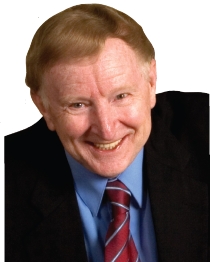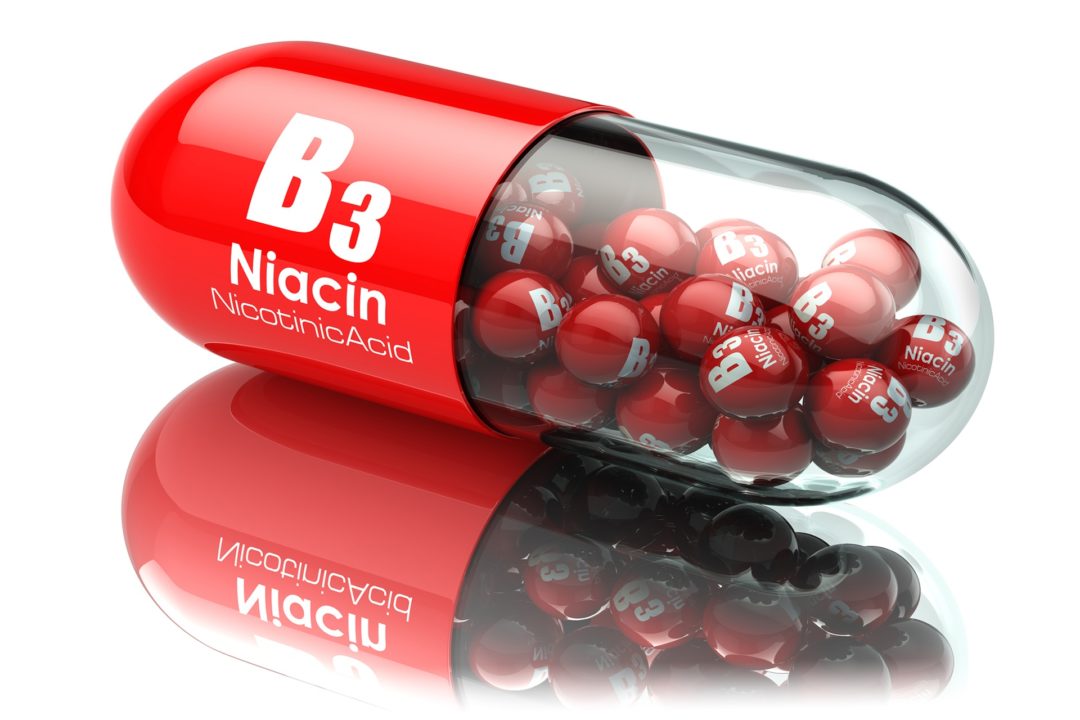Dr. Andrew W. Saul has been an orthomolecular medical writer and lecturer for 41 years. Dr. Saul has taught clinical nutrition at New York Chiropractic College and postgraduate continuing education programs. He was also on the faculty of the State University of New York for nine years. Two of those years were spent teaching for the university in both women’s and men’s penitentiaries (no, not as an inmate).
Dr. Saul is editor-in-chief of the Orthomolecular Medicine News Service and has published over 200 peer-reviewed articles. His bestselling book “Doctor Yourself” has been translated into eight languages. He has written a dozen other books, four of which as co-author with Hoffer. Dr. Saul's educational website is www.DoctorYourself.com, the largest peer-reviewed, non-commercial natural healing resource on the internet. He is a board member of the Journal of Orthomolecular Medicine and the Japanese College of Intravenous Therapy. Saul was inducted into the Orthomolecular Medicine Hall of Fame in 2013. He is featured in the documentaries Food Matters and That Vitamin Movie.
Passwater:Dr. Saul, before we get into the details about how niacin works to reduce the symptoms of schizophrenia, would you please comment on the recent meta-analysis of niacin and schizophrenia by Firth et al in February (1)?
Saul:First of all, the authors actually said something worthwhile: nutritional supplements may reduce psychiatric symptoms.
However, it is vastly better than this. A very large number of physician reports and clinical studies have already clearly shown that niacin and the other B-vitamins are effective against mental illness. The meta-analysis you refer to selected only 18 randomized controlled studies and a total of only 832 patients. Yet Dr. Abram Hoffer successfully treated many thousands of patients. The word “Hoffer” is not found, not even once, in this so-called meta-analysis. His work was ignored. What kind of an analysis is that? And, although the meta-analysis ignored thousands of cured people, it was still positive about vitamins.
Imagine if they had used niacin. What, you say: they did not even look at niacin? Right. Believe it or not, they completely omitted niacin. The word niacin is not mentioned even once in the entire published paper. Dr. Hoffer said that niacin is the specific cure for schizophrenia. Not other nutrients; niacin. The meta-analysis totally ignored the one vitamin that is known to work best. That is like a college course in Shakespeare omitting Hamlet.
I feel sorry for the families of schizophrenics who will be harmed by not knowing the truth.
Passwater:Let’s go back to the beginning. How did Dr. Abram Hoffer discover that niacin had curative powers in schizophrenia? What was his “eureka” moment?
Saul:I have Dr. Hoffer’s own words describing his first schizophrenic patient that he treated with niacin: “The first was a 12 year-old boy in 1960. To get the boy to take it, his father crushed the niacin tablet and spread it into a jam sandwich. That boy is now a research psychiatrist.”
Passwater:How did Dr. Hoffer explain the results of niacin therapy in schizophrenia? Did he modify his theoretical explanations over time and are they accepted today?
Saul:To the very end of his life Abram maintained what he termed the adrenochrome hypothesis. There is, he said, a chemical found in quantity in the bodies of schizophrenic persons. It is an indole compound called adrenochrome. Adrenochrome (which is oxidized adrenalin) has an almost mescaline- or LSD-like effect on the body. That might well explain schizophrenic behavior. Niacin serves to reduce the body’s production of this toxic material. And, niacin or niacinamide work on and with the body’s benzodiazepine receptors, similar to tranquilizers. But niacin is cheaper and safer. Far safer.
Passwater:In 1981, Dr. Hoffer explained the biochemistry involved with the adrenochrome hypothesis, “Adrenaline is oxidized to adrenochrome in a two-step process. One electron is lost, forming a highly reactive free radical, an oxidized adrenaline. It is readily changed back to adrenaline. The reversible NAD <-> NADH system is involved. If another electron is lost, adrenochrome is formed but this is a one-way process. Adrenochrome is not reduced back to adrenaline. This may be a mechanism at synapses in the brain by which the body regulates the reactions of the neurotransmitter amines. Trihydroxy dopamine (6 hydroxy dopamine or TOPA) is highly toxic to dopamine receptors, perhaps because of the formation of aminochrome at the receptor site thereby destroying it. Vitamin B-3 which controls formation of NAD is thus involved. With a relative deficiency of vitamin B-3 too much trihydroxy dopamine may be converted into its aminochrome” (2).
Did Dr. Hoffer publish his research in peer-reviewed journals?
Saul:Certainly . . . until they refused his work. That is why he created his own journal, now known as the Journal of Orthomolecular Medicine. JOM is celebrating its 50th year by going open access.www.isom.ca/JOM/
That means you can read the Journal for free.
Passwater:Does the new documentary, “That Vitamin Movie” discuss niacin and brain health?
Saul:Yes. “That Vitamin Movie’s” sections on niacin therapy are among the most popular parts of the film. Even a basic working knowledge of niacin can profoundly change so many patients for the better. This vitamin becomes very interesting very quickly. The movie can be viewed atwww.thatvitaminmovie.com
Passwater:How else is niacin involved in brain health? Does it help protect against Alzheimer’s Disease and other dementias?
Saul:Niacin, or niacinamide, most certainly helps protect against Alzheimer’s. The Orthomolecular Medicine News Service published an interesting article on this, “Vitamins Help Prevent Alzheimer's Disease: News Media Ignores Supplement Benefits . . . Again.” Because the news media did ignore it. www.orthomolecular.org/resources/omns/v09n30.shtml B-complex vitamins are absolutely vital for nerve cell health. Where pathology already exists, unusually large quantities of vitamins are needed.
Niacin is valuable against multiple sclerosis. Niacinamide, said researchers at Harvard Medical School, “profoundly prevents the degeneration of demyelinated axons and improves the behavioral deficits.” And this was published over ten years ago in the Journal of Neuroscience, which is full-text free access at www.jneurosci.org/content/26/38/9794.long
This is good news, but it is a long way from being new news. Half a century ago, Frederick Robert Klenner, M.D., of North Carolina, was using vitamins and other nutrients to arrest and even reverse multiple sclerosis. His detailed megavitamin protocol is posted for all interested persons to read atwww.townsendletter.com/Klenner/KlennerProtocol_forMS.pdf
Passwater:Does niacin help cognitive function?
Saul:Yes, but the best bet in this case is the entire B-complex. Dr. Ruth Harrell showed the great positive effects of supplemental thiamine on learning . . . in the 1940s! Decades later, she and her colleagues demonstrated improvement in the IQ of Down Syndrome children. This was major research, published in the Proceedings of the National Academy of Sciences. It has been ignored.
Passwater:Memory?
Saul:Maybe, but I forget. Just kidding. Yes.
Passwater:Wherecan interested readers find more information on using niacin for treating schizophrenia?
Saul:In “Niacin: The Real Story,” Dr. Hoffer, myself, and Dr. Harold Foster present the practical details of niacin treatment. Questions about niacin's proven safety and effectiveness are thoroughly addressed in this book. It is not a biochemistry textbook, however. Let's be honest: to most of us, that is a relief. It is a how-to manual.
You can subscribe free of charge to the Orthomolecular Medicine News Service. The OMNS, in its 14th year of publication, is peer-reviewed and non-commercial. You can read the entire archive here:http://orthomolecular.org/resources/omns/index.shtml
Passwater:Why are some people concerned about taking large amounts of niacin?
Saul:The two biggest concerns people have with niacin are the flush, and the possibility of elevation of liver enzymes. People who do not like the flush can simply use niacinamide, or inositol hexaniacinate. These two forms of niacin will not cause a flush in 99% of those taking them. A small elevation in liver enzymes indicates increased liver activity, not liver pathology. Dr. Hoffer emphasized this. So did Mayo Clinic niacin researcher William Parsons, M.D. “Niacin: The Real Story” goes into all this in detail. If a person cannot afford the book, a search for “niacin Hoffer” at www.doctoryourself.com will provide a considerable amount of information free of charge.
Passwater:Dr. Saul, we once again thank you for discussing the amazing health benefits of niacin with us. Let’s continue with arthritis.
References1. “The Effects of Vitamin and Mineral Supplementation on Symptoms of Schizophrenia: A Systematic Review and Meta-analysis.” J. Firth (a1), B. Stubbs (a2) (a3), J. Sarris (a4) (a5), S. Rosenbaum (a6) ... DOI: 2. https://doi.org/10.1017/S0033291717000022 Published online: February, 16, 2017 Orthomolecular Psychiatry 10:2; 98-118 (1981)

Dr. Richard Passwater is the author of more than 45 books and 500 articles on nutrition. Dr. Passwater has been WholeFoods Magazine’s science editor and author of this column since 1984. More information is available on his website, www.drpasswater.com.
NOTE: The statements presented in this article should not be considered medical advice or a way to diagnose or treat any disease or illness. Dietary supplements do not treat, cure or prevent any disease. Always seek the advice of a medical professional before adding a dietary supplement to (or removing one from) your daily regimen. The opinions expressed in bylined articles are not necessarily those of the publisher.
Published in WholeFoods Magazine June 2017










